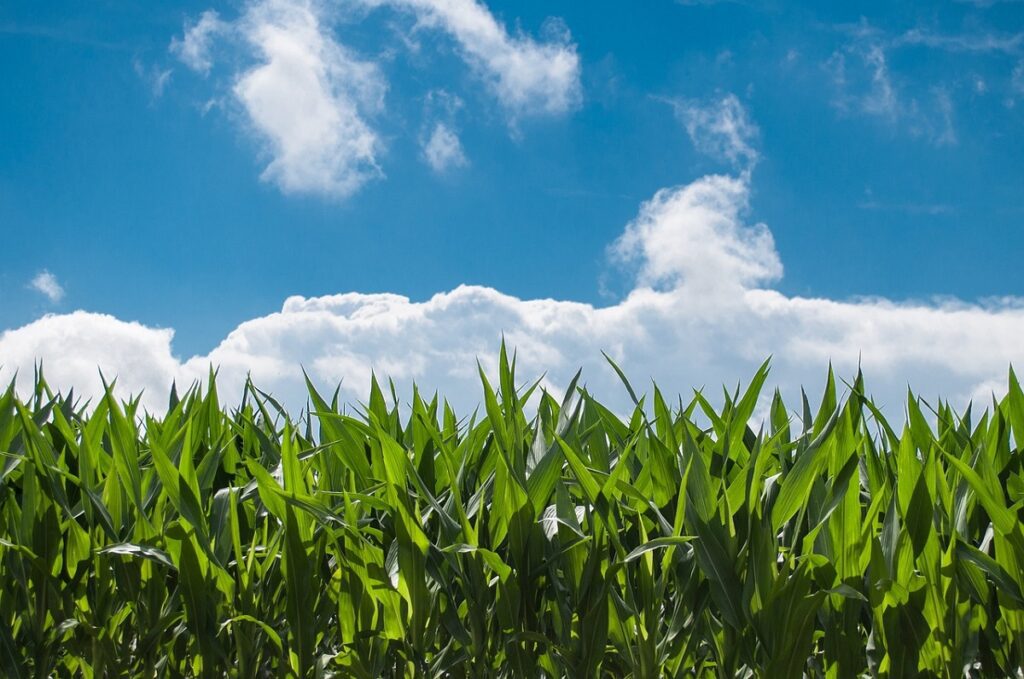U.S. farm productivity continues to grow, but the pace is slowing due to adverse climate conditions, indicating a need for advances in biotech and other farming technology, USDA economists reported last week.
“Agricultural productivity growth rates in the last two business cycles, on average, were lower than in most earlier periods,” the researchers said.
“From 2007–19, output grew at an average annual rate of 0.61%, down from 0.77% in the 2000–2007 cycle. Slower output growth in the more recent period also reflects decreases in crop production attributed to adverse weather,” the USDA economists reported.
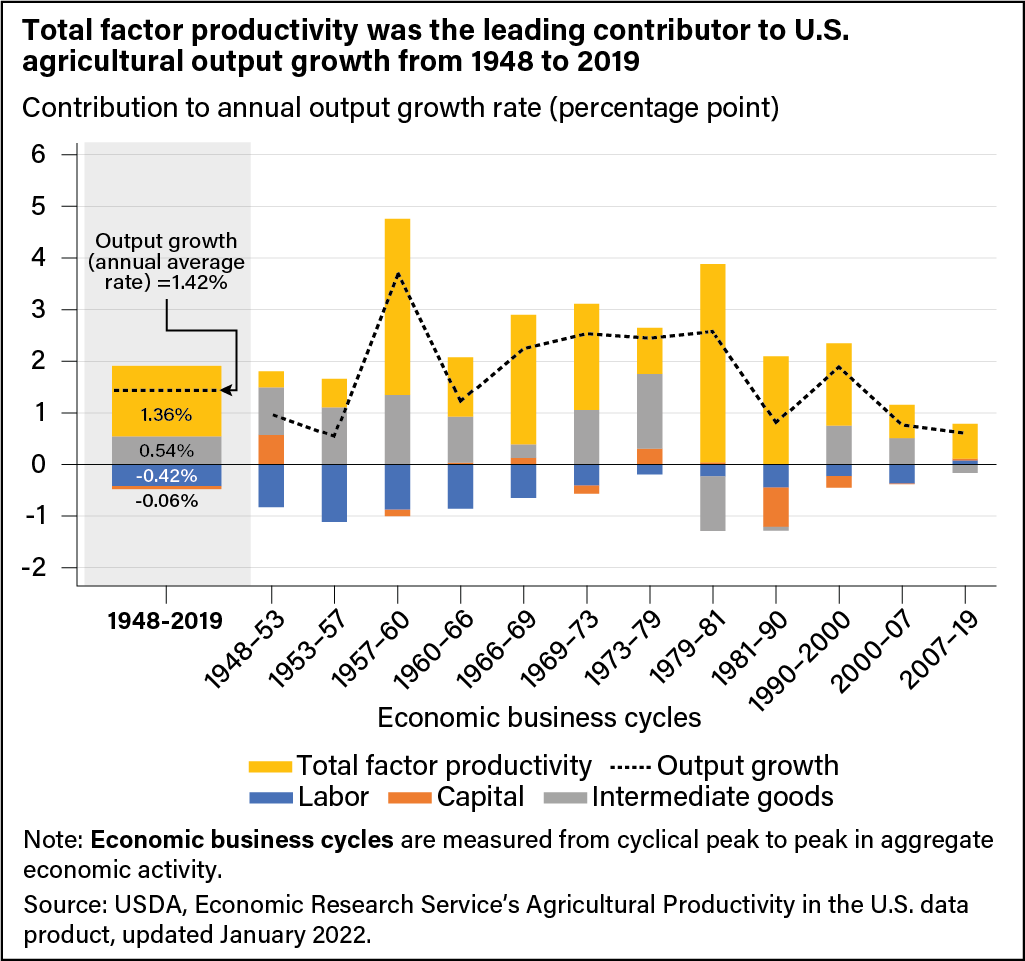
Agricultural output has grown
According to the research, the total factor productivity data for the U.S. farm sector, together with the estimates of 10 outputs and 12 inputs, are regularly published by Economic Research Service (ERS) researchers who also track trends in agricultural productivity in the country.
Recent data show that between 1948 and 2019, U.S. agricultural output increased 175%, or 1.42% annually. During the same time period, total input utilization climbed 4% with an average annual growth rate of 0.6%.
“Total factor productivity growth—measured as the difference between total output growth and total input growth—grew at an annual rate of 1.36%, accounting for most of the farm output growth over the years,” the economists said.
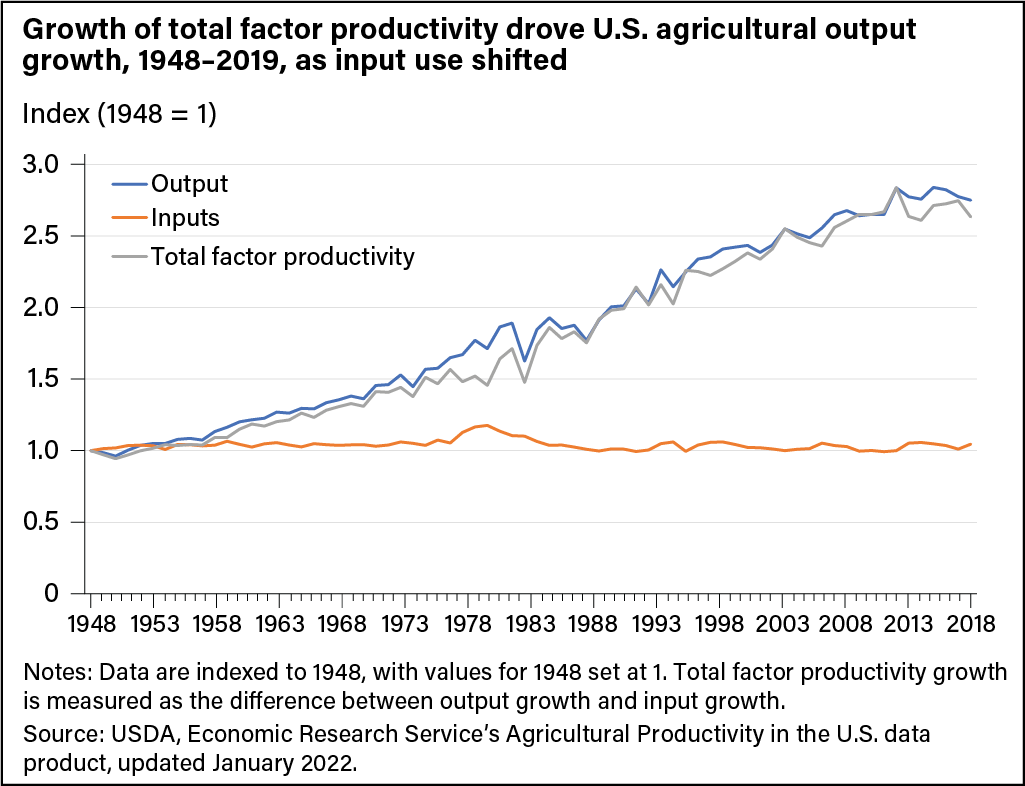
Technological changes boost productivity
Over time, technological advances have reduced the cost of agricultural inputs like machinery and pesticides used by farmers and partially replaced inputs like labor and land. Growth in productivity also aided in the transfer of agricultural labor and land to other industries.
“Labor productivity (measured as total output per unit of labor input) and land productivity (measured as total output per unit of land input) were about 10 times and 4 times their 1948 levels in 2019, respectively,” the researchers said.
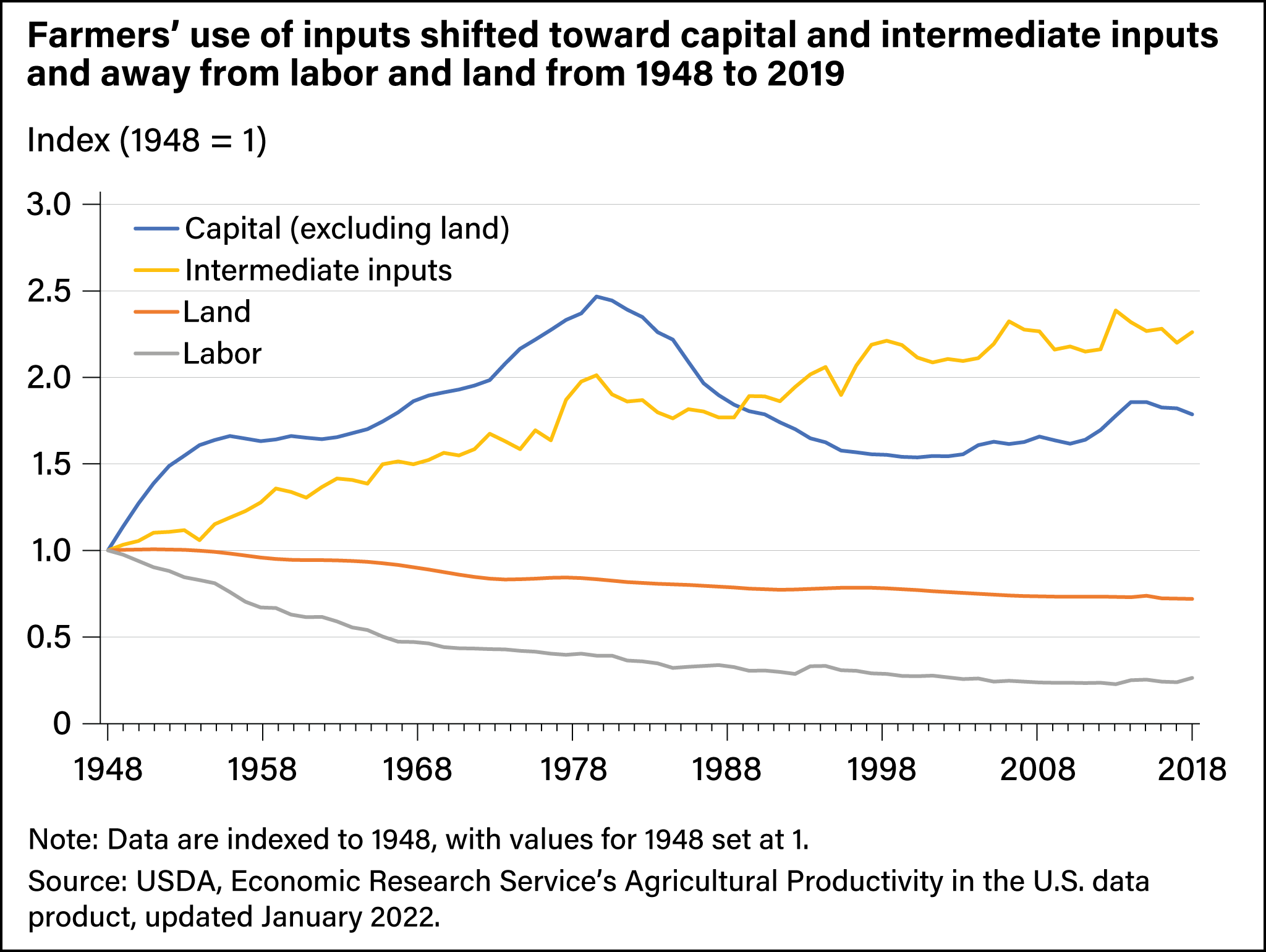
Production of crops vs production of livestock products
Crop production increased by 186% throughout the seven-decade span, while livestock production increased by 140%, the researchers said.
“In 2019, crops accounted for 54% of the total value of agricultural output in the United States while livestock and related products accounted for 39%,” they said. “Overall, crop production is more volatile from year to year than livestock production as weather changes become more frequent.”
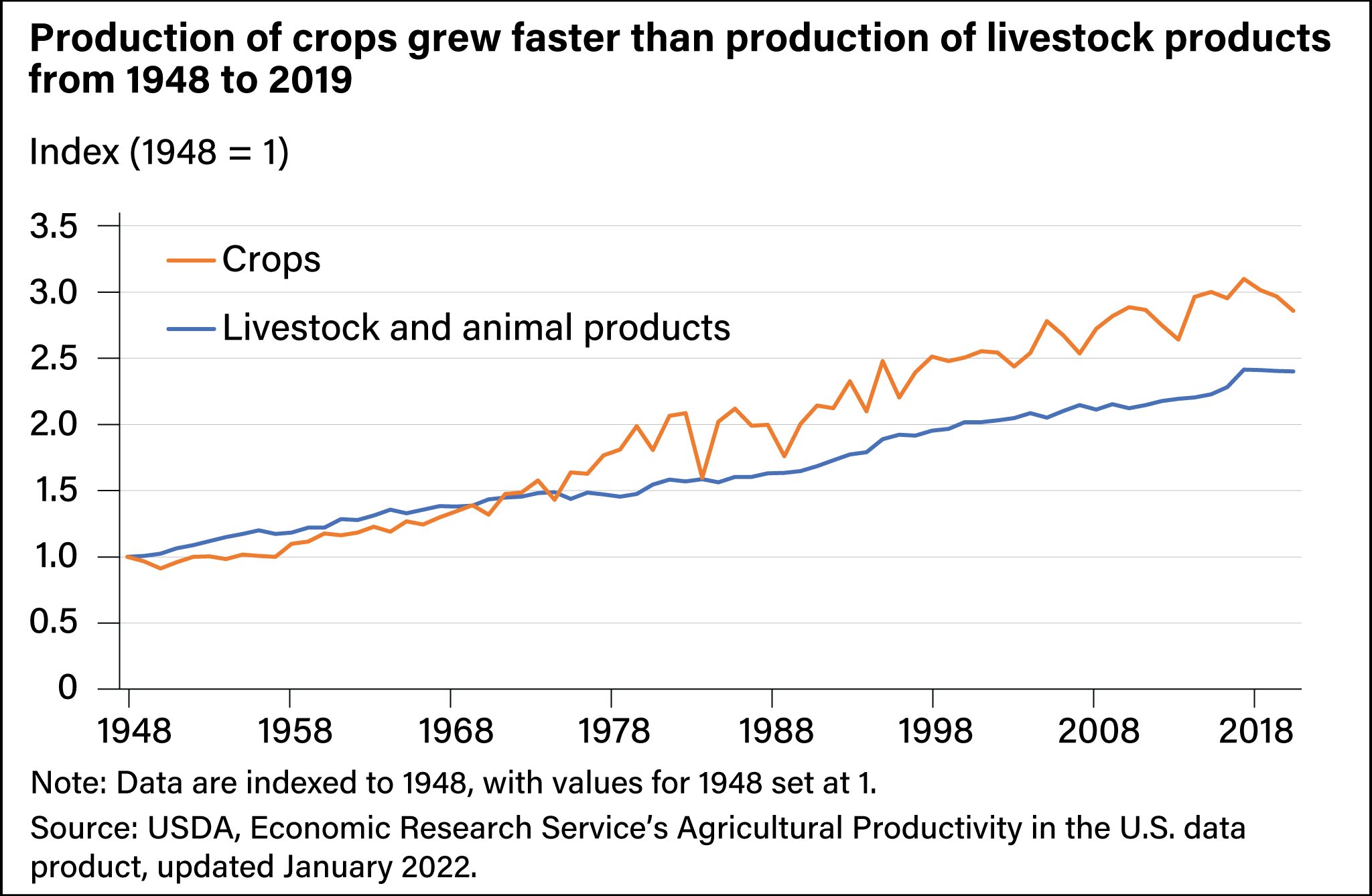
Biotech is needed now more than ever
The USDA economists called for greater R&D investment and use of “updated technology,” including “drought-tolerant crops.”
Biotech solutions have been shown to have the ability to help increase farm productivity in the face of climate change. In addition to drought, gene editing can reduce food loss and waste, improve nutrition, and even help food animals withstand the heat. In the long term, biotech can help reduce factors that drive climate change.


